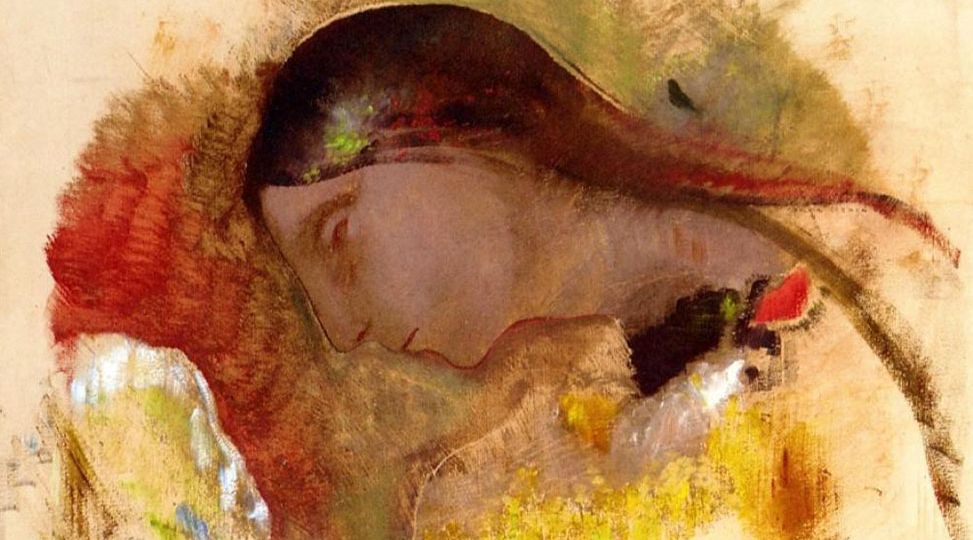
Dream Tending
A Sensory Practice
Teresa Nowak, January 10, 2018
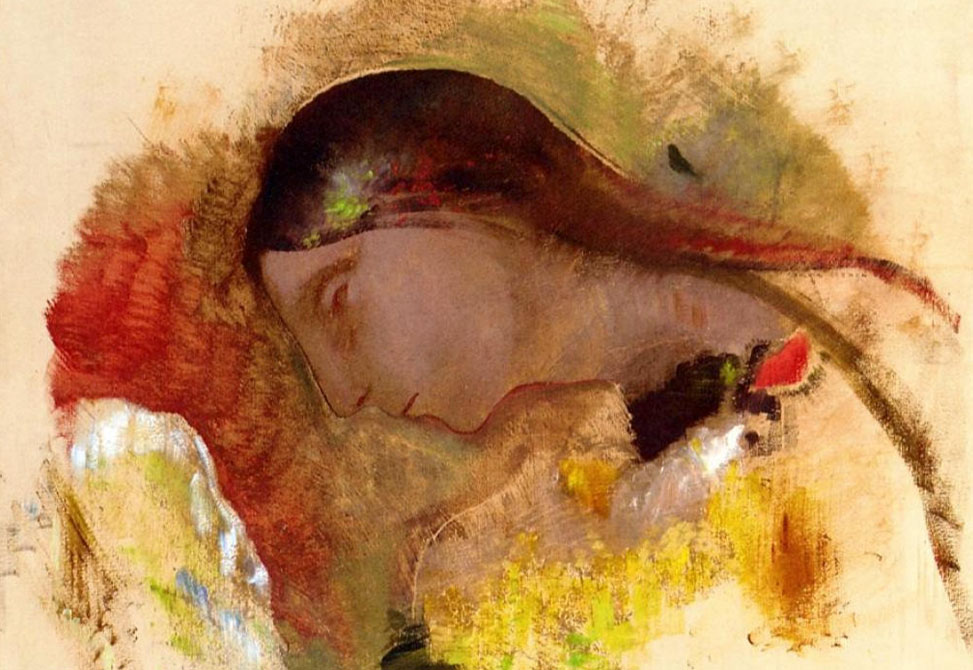
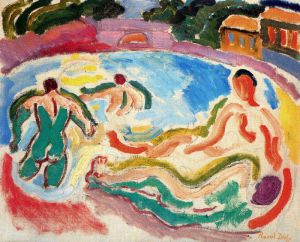
Our interpretations of dreams must be filtered through a layer of consciousness. Personality types serve individual preferential needs, leading to an unconscious conflict of interest between dreamer and analyst. As Jung acknowledged, “The dream cannot but skip all those points that are particularly important to the conscious mind. It manifests the ‘fringe of consciousness,’ like the faint glimmer of stars during a total eclipse of the sun” (1990/2010, ¶ 511). Here, he placed emphasis on the quality of the dream image in that it captures something beyond the conscious mind that speaks to the deeper subliminal levels of the psyche. In contrast to dream analysis, dream tending allows the dream images to speak for themselves, only to be beheld by the dreamers for their own deeper understanding, without being muddied by the waters of interpretation through another’s psychological type or psychic state of consciousness.
Aizenstat’s method draws on the example of archetypal psychologist James Hillman who advocated the power of honoring the images of the psyche without interpretation. Hillman (1979) saw the psyche as a lens of potentialities, where there are multiple answers to behold without the urgent need to remedy anything: “We work on dreams not to strengthen the ego but to make psychic reality … to make soul by coagulating and intensifying the imagination” (p. 137). This experiential movement of imagination is Hillman’s way of soul-making.
Aizenstat’s dream tending practice forms part of the process of soul-making: it emphasizes the dreamer’s own insights through relationship with living images as animated and intelligent aspects of interiority. The heart of dream tending work is to animate the images of dreams with curiosity and the intention of entering into a reciprocal relationship. In this way, the images extend beyond the ego realm of association, beyond the transpersonal levels of amplification, arising “from the deepest level of the psyche” (Aizenstat, 2011, p. 21). When animated, the images spark imagination in the dreamer. Dream tending is not simply a practice of observing ideas but an experiential way of interacting with the images. The practice speaks to the capacity of the psyche to bring forth wisdom from the collective unconscious, and the world’s unconscious, to the individual for the benefit of self-revelation in the personal unconscious. In this way, images are a source of wisdom already churning with life and the evolution of consciousness within us. They are hosting us, rather than us hosting them. By simply inquiring into the visitors within, Psyche speaks her subtle wisdom without us clamoring to interpret. Such an approach constitutes a relevant shift away from Jung’s notion of dream interpretation to one that can empower psychological type as a portal to the revelations inherent in dreams (Aizenstat, 2011, pp. 24-59).
An INTJ Dream-Tending Experience
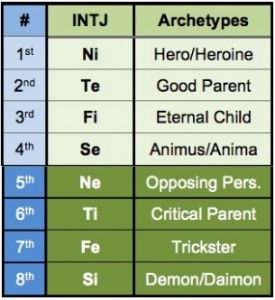
Preparing to Enter the Realm of the Dream
In preparation for the dream tending session, we began with a soothing atmosphere to meet the dream in the way of the dream (Aizenstat, 2011, p. 25). I briefly explained to her the attitude and premise of dream tending as a way to animate images as forms of embodied intelligence via a standpoint of curiosity and awe. The living images should be approached in a dream-like fashion, inviting open spaciousness while dropping the ego mind that tries to reason out what the images mean. In short, the images call for an attitude of marvel and reverence (p. 25).
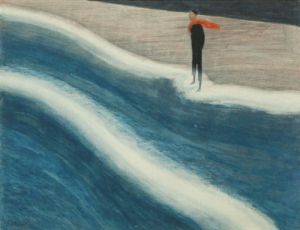
We were seated outside on the deck of a beach house, and the ocean provided a dreamlike quality. I suggested finding the rhythm of the ocean’s waves within her as a part of the natural world and as a way of connecting to the dream in the present. I suggested that she allow the dream to unfold with the fluidity of the waters of the seascape. The dream is continuous and a field of everlasting space and time, always unfolding. This process of becoming present in the here and now is connected to the attitudinal function of extraverted sensation (Se), which “is acutely aware of the people, things, and events in [the] immediate surroundings; is enjoying their colors, sounds, etc. directly; and is striving to engage with them” (Hunziker, 2016, p. 140). Established in present attention this way, listening and witnessing is heightened (Aizenstat, 2011, pp. 26-27).
We discussed the orienting style of not knowing: being open to the possibilities of the dream images without imposing analysis and rational thought onto the dream. Engaging the dream in an attitude of not knowing allows the dream to speak as it is. In this manner, the function is anti-intuitive: the dream is allowed expansive capacity to be original and alive as opposed to imagined. Setting the atmosphere for dream tending with these attitudes cultivates a dynamic space to enter into relationship with the dreaming psyche as it reveals itself (Aizenstat, 2011, pp. 27-30).
Stepping into the Dream
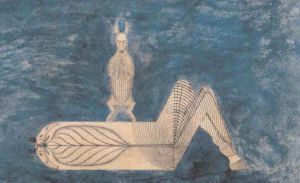
I guided her to step into the dream in the present tense and to vivify the language. Speaking in the present tense is a way of stepping into the dream as it is living now, keeping the dream animated and fresh. Aizenstat (2011) suggested speaking of dreams using “-ing” verbs, which rouse action and immediacy, forming another connection with the extraverted sensation function. For example, “the ocean beckoned me” becomes “ocean is beckoning me.” Also, removing articles such as “a” or “the” is effective in sharing the dream, treating each image as distinctive. Lastly, personifying the dream images with a capital letter, as a proper noun, to further bring them alive is valuable, so the sentence becomes, “Ocean is beckoning me” (pp. 36-38).
Two core questions distinguish dream tending from all other methods of dream work: “Who is visiting now?” and “What is happening here?” (p. 33). In other words, Dream leads the way through its voice. This shift of engagement ensures that we not inquire into what the dream means, or why something is taking place, but instead notice which images arise as autonomous visitors of the dream (pp. 33-36). As we stepped over the threshold into the dream, I began by asking “Who is visiting now?” followed by “What is happening now?”
The Telling of the Dream
The 37-year-old INTJ Dreamer responded from memory:
I am alone. I am on a residential street at night outside a house. I go into a house, and there is a party with loud music and people sitting on the floor. There is little or no furniture, and it is too crowded. I recognize a few people I know from high school. I go into the backyard and find a large group of people. There is a party tent with loud music and disco lights, with people wearing glow necklaces, and dancing for a celebration of a girl. She has a bouffant hairdo and wears a prom dress. I am surprised she invited me because I thought she didn’t like me. I see my husband in a corner of the yard, talking to another girl who I don’t know. A police helicopter hovers overhead and shines a bright light on the yard—on me. I want to leave, but my husband won’t come with me. He wants to stay and talk to the girl. He says, “If you want to leave, go ahead and leave.” I leave feeling upset. I walk in the house, and people are drunk and doing drugs, and they try to get me to stay. They say, “Chill out. Don’t worry about the helicopter.” I go outside, and my college roommate is waiting to drive me to swim practice. I am sick with anxiety. I am late, and my husband stayed with that girl. (Author’s notes, August 29, 2016)
Tending the Living Images
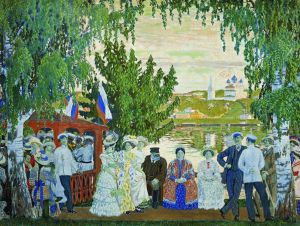
Sustaining the relationship with an image using the senses (Aizenstat, 2011, p. 43) draws on the function of introverted sensation, which “uses an external stimulus in the present to stimulate an internal experience: the recall of the past” (Haas & Hunziker, 2014, p. 44). Using the senses in the imaginal space is one way for the dreamer to deeply notice and experience dream images. By engaging in the imagination in the use of sight, taste, scent, sound, and touch, the relationship with the image intensifies, and the image becomes multi-dimensional and alive. When images are noticed through the senses, more attention to their unique characteristics develops, and an embodied experience opens, creating an experiential interaction (Aizenstat, 2011, pp. 43-46).
Setting the Stage for Revelation
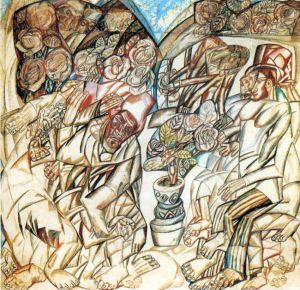
I advised the dreamer to consider the images as guests of her dream,visiting her by their own design, offering their own unique intelligence. On the discovery of sentient images, Aizenstat (2011) said, “The intelligence of living images is perhaps the most surprising and important revelation” (p. 51). Honoring the embedded intelligence in the images, as well as allowing images to speak on their own behalf, leverages the power of the expansive, ancient, natural world. When such wisdom is shared, the dreamer is encouraged to express gratitude for the gift, perhaps by creating a ritual or enacting an embodied expression of an image as a follow-up to the dream (p. 54).
She began again and made personal associations. At the beginning, the associations were pleasant. She revealed she was comfortable in the dream house with the people she knew. She told me one of the guys was her high school boyfriend whom she loved. The house looked very small and old, and it reminded her of her childhood home. The girl in the party tent resembled the wife of a childhood friend who lived across the street from her growing up. She was an acquaintance, but she knew the girl had struggled with drugs and gone to rehabilitation. The Dreamer revealed that this reminded her of her college raves where she took ecstasy drugs. She felt happy and free in this space and named it a “techno feeling.”
However, when the light shined on the yard, she saw her husband talking to a girl, and this upset her. The Dreamer unconsciously placed her hand on her heart as she described the girl as younger, more petite, and childlike. [Author’s note: The dreamer is also petite.] She noticed her husband had his arm around the girl, comforting her. She noticed the girl had an oven mitt on her left hand; she was burned.
Establishing Relationships with the Images
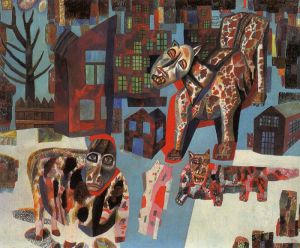
In the course of engaging with dream images, they evolve and dissolve, continuously changing shape. Through active imagination, the dream images may appear in a certain form one day and in another the following day. This fluctuation imparts movement to the process. Aizenstat (2011) contended,“Images themselves evolve first and our experience with them can be seen as a consequence of their individuation process” (p. 55). Thus, the images connect to the core of ancestral intelligence and energize the dreamer’s development. As the images evolve, dreamers witness their own evolution. Dream images show the way on the path of inner personal discovery (pp. 55-57).
In addition to engaging with objects and people in the dream, dreamers can engage with the emotional states in the dream. I suggested we talk to the emotion of Anxiety. She asked it, “Why do you keep coming to me?” She told me Anxiety replied, “I am your performance. I am part of you.” She told Anxiety, “I won’t ever perform at that level again. I don’t need you.” Then she said aloud, as if to herself, “But that’s who I am” (Author’s notes, August 29, 2016).
Moving From Relationship to Revelation

The lower attitudinal position of introverted sensation was illuminated through this expression and brought the Dreamer’s self-realization, as evidenced by a floodgate of blocked emotion. Jung (1921/1990) explained that the fantasy image that arises from the creative psyche “fashions the bridge between the irreconcilable claims of subject and object, introversion and extraversion. In fantasy alone both mechanisms are united” (¶ 78). By sticking to the image and noticing closely what happened with her somatic response, the Dreamer gained a deeper psychological perception of herself.
As dreamers experience working with living images in this sacred regard, a deepening of experience is often found—as if the images themselves are tending to both the dreamer and the dream tender. Like portals to creation itself, the images may appear illuminated, vital, and enlightened, offering gestures of compassion and love, which further develops the relationship bond in soulful connection (Aizenstat, 2011, pp. 57-59). The practice of dream tending encourages Dreamers to develop a psychic relationship with images beyond the initial dream by returning to the image with ongoing creative acts like active imagination, artistic expression, or ritual creation in homage to the dream. In this way, dream images remain psychically alive and their potential in future psychological revelation may develop over time. Here, the dreamscape of the imaginal realm becomes a well source of fluid and dynamic participation to return to time and again.
Illuminating the Conscious Aspects of the INTJ Psyche
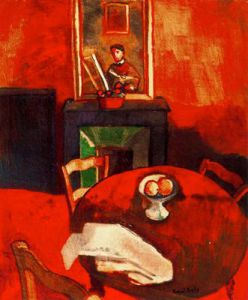
Her jealousy of Petite Girl with Husband indicates the INTJ’s puella aeterna function of introverted feeling (Fi). Any function in this position is “less mature and more irresponsible” (Haas & Hunziker, 2014, p. 178), and she felt wronged by Husband, almost pouting to get his attention. In the dream images, the Dreamer enjoyed the techno party although she was childish in her display of jealousy over her Husband’s attention to Petite Girl. Introverted feeling “focuses on the subjective, internal world of absolute personal value systems and assesses all things based upon whether they uphold the values, conflict with them, or have no impact” (p. 103). The Dreamer expressed surprise that Party Girl invited her; she had thought the hostess did not like her and was delighted with the notion that she could be wrong about that. The Dreamer felt like Husband’s attention to Petite Girl was platonic, yet she was jealous of his attention to her. High School Boyfriend told her to “chill out,” and stay at the party. “Fi wants to make choices and act in ways that create and maintain inner harmony” (p. 103). In this case, in the dream image, the Dreamer made decisions based on her internal feelings, leading her to assess the party situations from internal processing systems.
The INTJ Dreamer’s function of extraverted sensation in the dream was expressed through the party scene itself. Extraverted sensing “focuses on the current objective, external world to fully experience the details of the environment through the five senses. Se draws energy and enjoyment from people, objects, and events” (Haas & Hunziker, 2014, p. 33). Here, the Dreamer depicted a colorful, Dionysian display of people doing drugs, dancing, and enjoying music. Her Se animus transported her to a time when she partied to excess: she remembered her college raves and past drugs consumed. High School Boyfriend and Party Girl’s husband from her childhood represented repressed dimensions of herself (Author’s notes, September 27, 2016).
Illuminating the Attitudinal Shadows
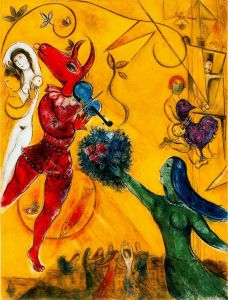
The archetypal witch carries the sixth function, which for INTJ Dreamer is introverted thinking (Ti). Introverted thinking “focuses on the subjective, internal world of underlying principles and truths by creating original systems and categories and assigning all information to a place within the appropriate framework, based on logical analysis” (Haas & Hunziker, 2014, p. 83). In this way, the dream images were very self-critical, leading her to claim that she would never be in “as good of shape” as she once was. In the dominant position, “Ti wants to attain internal precision through logical evaluation and decision making” (p. 83). In the sixth position, Ti often has “an authoritarian, stern, and arbitrary” aspect … [that] gives very bad advice” (p. 179). This showed in her critical self-talk, in her Anxiety about being late to swim practice, and her perceived under-performance inferiority complexes. She compared herself to Petite Girl that Husband tended to, feeling pale in comparison and overcome with self-doubt about her place in Husband’s life.
In the seventh position, the place of Beebe’s archetypal trickster, the INTJ Dreamer experienced trickster extraverted feeling in her inability to connect with others in the dream. Extraverted feeling “wants to make choices and initiate actions that create and maintain harmony in the outer world” (Haas & Hunziker, 2014, p. 93), and Fe dominant types can confidently charm others, but those with Fe in the trickster position do not always trust this process. So it is not surprising that the Dreamer was unable to persuade Husband or move him emotionally to come away with her. However, her Fe trickster had a constructive effect, too: It tricked her into examining how others feel. She was forced to look at Petite Girl that Husband was favoring. She noticed Petite Girl’s burned hand and saw that there were no sexual feelings involved. Her attention to Petite Girl disclosed where she was “tricked” in the dream to misunderstand Husband’s attraction to her. With a closer look, she understood he cared for the girl the same way he cared for their children—parentally. The Fe function “focuses on the objective, external world through using cultural value systems and assigning all things to a place within an appropriate system, based on qualitative value” (p. 93), and in the dream the Dreamer learned to use it appropriately, processing decisions based on her cultural value system to assess the image of Husband’s actions. Further, as an aspect of dream tending, she noticed the evolving images and their reflection of her own evolving nature in the dream experience. In sum, her trickster Fe helped the Dreamer to “overcome arbitrary or unreasonable obstacles” and “compensate” for the “vulnerability of the eternal child” (p. 179).
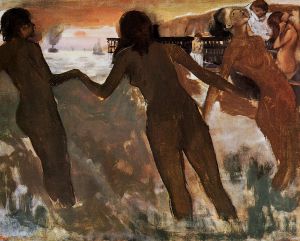
Conclusions
During a follow-up assessment in July 2017, the INTJ Dreamer revealed that the imagery and profound experience of the dream tending session still resonates with her, and she repeats the self-hugging motion (truly a movement of self-love, gifted by the image) many times each day now. This ritual reminds her of the deep feelings she felt in the presence of the awakened introverted sensation function. She said the dream tending experience was “shocking, mesmerizing, and cathartic. I came away with a renewed outlook on my most personal and intimate relationships and my own psyche.”
References
Aizenstat, S. (2011). Dream tending: Awakening to the healing power of dreams. New Orleans, LA: Spring Journal.
Beebe, J. (2004). Understanding consciousness through the theory of psychological types. In J. Cambray, and L. Carter (Eds.), Analytical psychology: Contemporary perspectives in Jungian analysis (pp. 83-115). Hove, UK: Brunner-Routledge.
Haas, L., & Hunziker, M. (2014). Building blocks of personality type. Charlotte, VT: Eltanin Publishing.
Hillman, J. (1979). The dream and the underworld. New York, NY: Harper Perennial.
Hillman, J. (1992/2014). The thought of the heart and the soul of the world. Putnam, CT: Spring Publications.
Hillman (2013). Archetypal psychology. (Vol. 1, Uniform Edition). Putnam, CT: Spring Publications.
Hunziker, M. (2016). Depth typology: C. G. Jung, Isabel Myers, John Beebe, and the guide map to becoming who we are. Clayton, NC: Write Way.
Jung, C. G. (1921/1990). Psychological types (CW 6). H. Read, M. Fordham, G. Adler, & W. McGuire (Eds.). (H. G. Baynes & R. C. Hull, Trans.) Princeton, NJ: Princeton University Press.
Jung, C. G. (1966/1993). Practice of psychotherapy (CW 16). G. Adler (Ed.). (R. F. C. Hull, Trans.) Princeton, NJ: Princeton University Press.
Jung, C. G. (1969/1981). Structure and dynamics of the psyche (CW 8). G. Adler (Ed). (R. F. C. Hull, Trans.) Princeton, NJ: Princeton University Press.
Jung, C. G. (1990/2010). The undiscovered self: With symbols and the interpretation of dreams. (R. F. C. Hull, Trans.) Princeton, NJ: Princeton University Press.
Images
Chagall, M. (1951). The dance. Retrieved from wikiart.org
Degas, E. (1875). The bathers. Retrieved from wikiart.org
Dufy, R. (1908). Bathers. Retrieved from wikiart.org
Dufy, R. (1908). Interior with fruit bowl. Retrieved from wikiart.org
Filonov, P. (1913). The gardener. Retrieved from wikiart.org
Filonov, P. (1926). Animals. Retrieved from wikiart.org
Kustodiev, B. (1910). Festive gathering. Retrieved from wikiart.org
Natterer, A. (1911). World axis with hare. Retrieved from wikiart.org
Redon, O. (1890). Closed eyes. Retrieved from wikiart.org
Redon, O. (1905). Head of a sleeping woman. Retrieved from wikiart.org
Spillaert, L. (1908). Young man with red scarf. Retrieved from wikiart.org



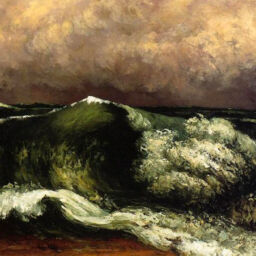

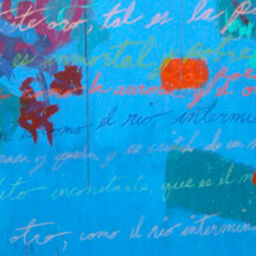
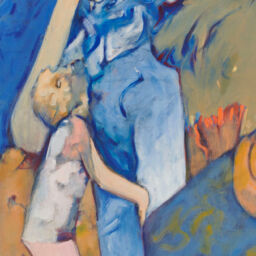
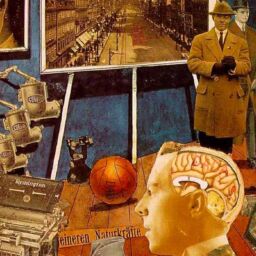
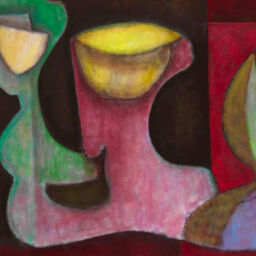

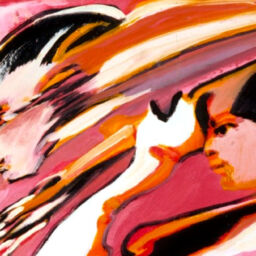


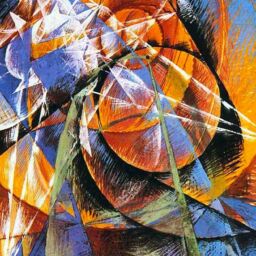
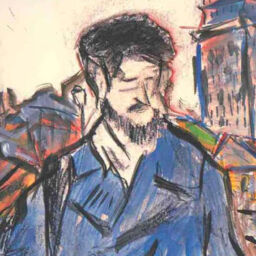
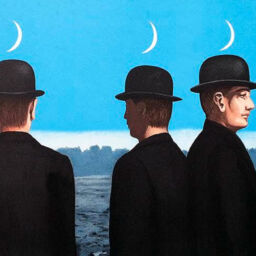
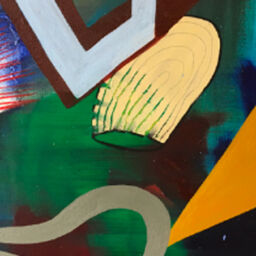

Hi, Adam,
Thank you for your comment, and for sharing your dream work experience in Jungian analysis. I agree that coming into full awareness of a dream is a bodily experience, which lends to a deep visceral understanding. As an ISFJ, your dominant trait of Si would take you right into the memory as a natural way of perceiving dream imagery for you, drawing on your bank of experiences and other images for relatedness. I appreciate the way you describe how your body reacts until a dream interpretation “feels right,” as if the place of understanding is felt deeply in the psyche/soma connection. I have experienced that as well.
As the dream tender, I follow the images and listen closely to what is happening in the dream, particularly when there is affect and unconscious body movements from a dreamer. These clues help me see the places to dive down for a closer look. Since I lead with Fe and Ni preferences, I relate to the harmony and emotional needs of the dreamer, and look for patterns emerging in the unconscious that present a larger vision of possibilities.
In your case, I wonder how you might experience a dream more fully using the dream tending practice without placing an interpretation on the dream, but rather by a self-discovery journey based on your interaction with the images? In this place, it would shift from waiting for the right articulation of a dream, to understanding its deeper message from a embodied perspective. I suspect you would find an innate ability to walk through an animated dream, given your dominant Si to guide you with vivd recall. Dropping down into your shadowed Ni attitudinal function might bring great revelation of how you visualize the dream image patterns with an open perspective to see how psyche speaks to future potentialities.
Thank you so much for taking the time to engage with the article, and for keeping your dream images psychically alive.
Best wishes,
Teresa
This piece has made me more aware of the role of introverted sensation in working with dreams. As someone with ISFJ preferences, I’ve always thought of dream work as being in the realm of introverted intuition, and have worked to get better at using that function. Now I am noticing that the part of dream work that involves associating to dream material is really an introverted sensation process–comparing and matching the dream material to other images and experiences stored in memory.
I’ve always been aware that there is an Si component to knowing whether the dream interpretation is accurate and complete or not. When discussing my dream with my Jungian analyst, I notice that my body holds tension until the meaning and import of the dream is correctly articulated, and then all those muscles relax. For a dream interpretation to ‘feel right’ for me is entirely a bodily thing.